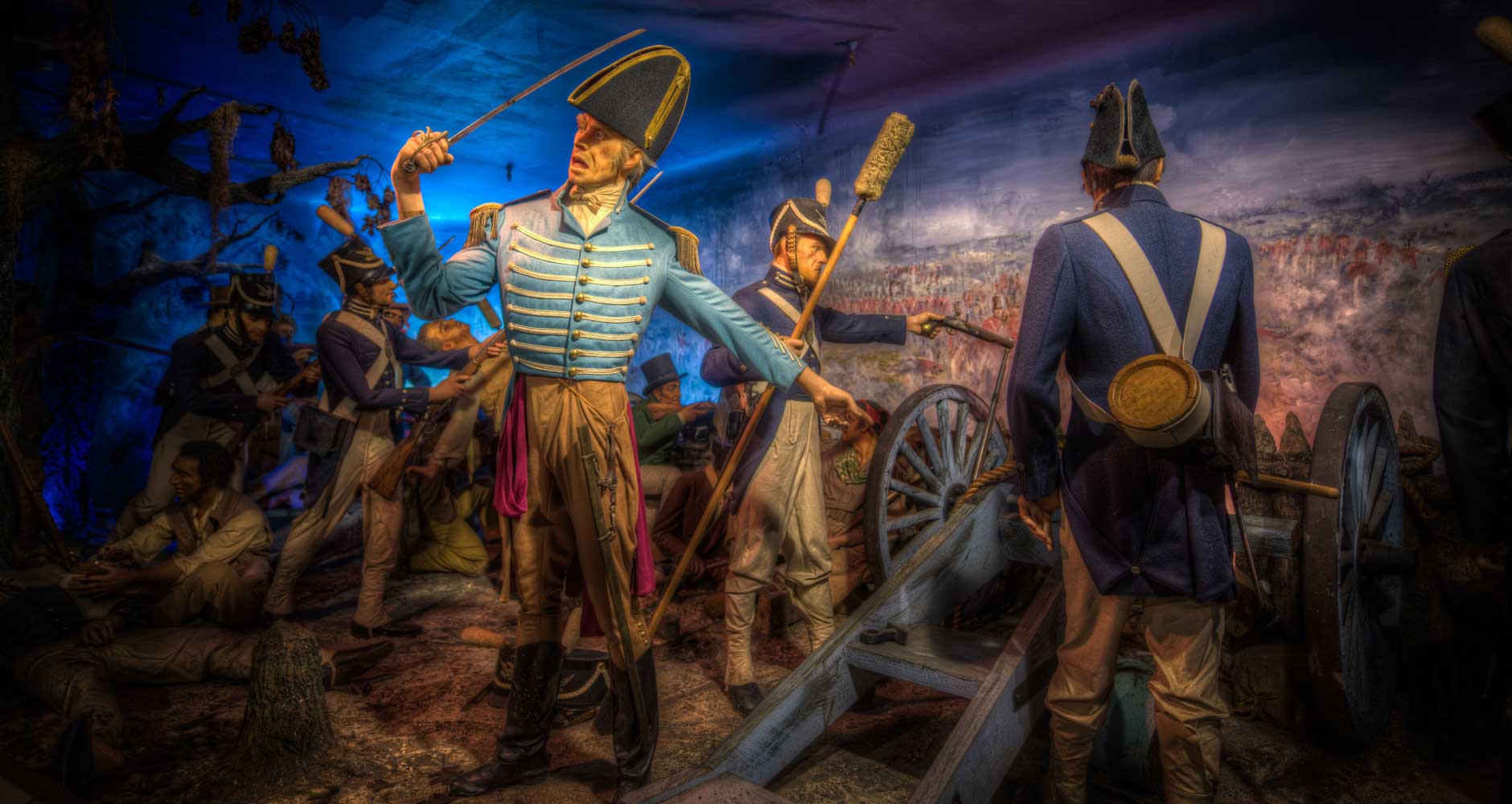
Perhaps more than any other American city, New Orleans has more local museums than tourists—or natives—even know about. Places like the Pharmacy Museum, The 1850 House, or The House of Dance and Feathers all symbolize a city with bustling energy.
Though its doors will close forever in January of 2016, the Historical Wax Conti Museum remains one of New Orleans’ most treasured family-attractions. Unlike wax museums like those of Madame Tussaud’s celebrity haven, the Musee Conti ventured down a different path as it introduced visitors to New Orleans’ history.
From a naked French Emperor Napoleon seated in a tub with a sponge appropriately placed “downstairs,” to the prostitutes tearing at each other’s hair in the red-light district, Storyville, the Musee Conti has never taken the well-trodden path.
But this museum, located at 915-923 Conti Street in the French Quarter, has experienced some strange things in its day. And as one can only imagine, this property’s rather diverse history no doubt has had a hand in sparking all of the paranormal activity occurring within the Musee Conti today.
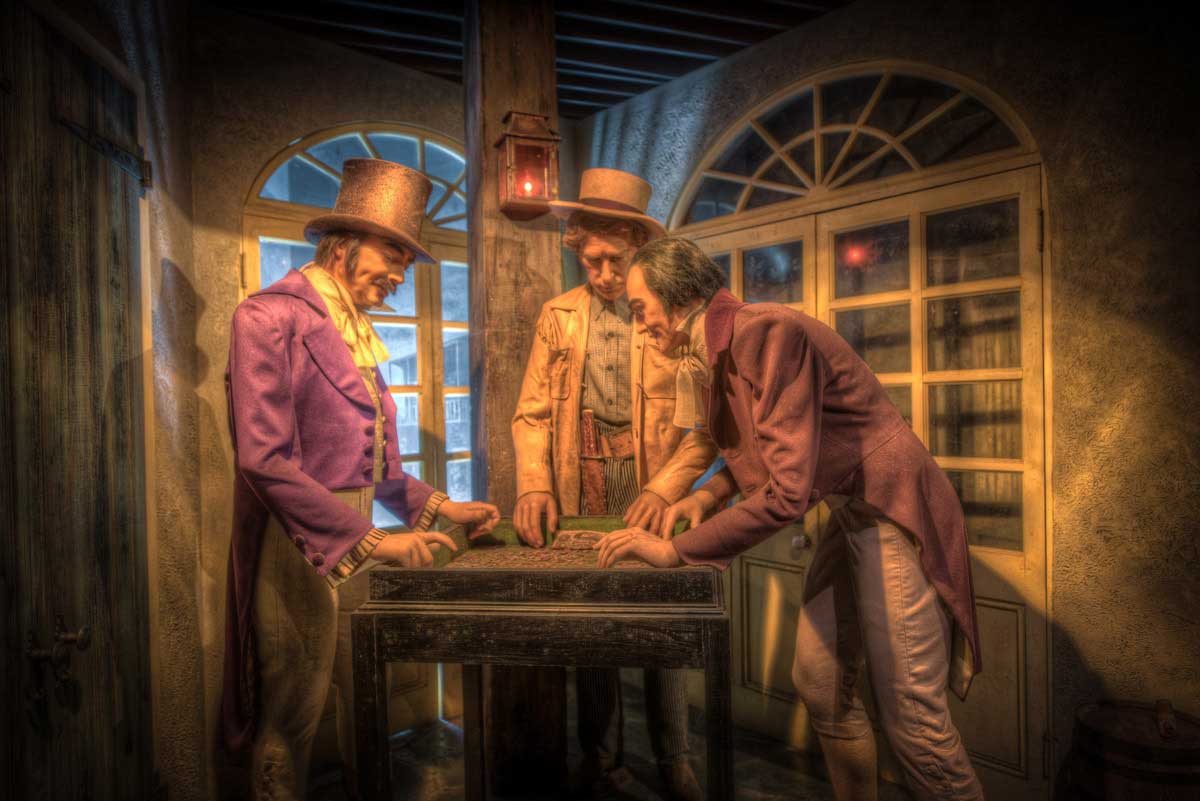
Wax figures and ghosts—could there ever have been a better pairing than this?
The lot on which the Musee Conti sits was not settled until 1777, during the midst of the Spanish Colonial period. Conti Street itself was an extension of the French Quarter during the Spanish years, when room in the French Quarter was already too full and bumping at the seams.
Although today the Musee Conti’s lot spans nearly the entire block of Conti, between Dauphine and Burgundy Streets, it was separate properties during the nineteenth century.
Welcome to 915-923 Conti Street—where the boys went to school and inheritance was fought over, and coffins were made.
It was around the late 1820s when an all boys’ school was founded on Bourbon Street. Named the Jefferson Academy, the school did not last long on Bourbon before it was moved to Conti Street.
While here, Jefferson Academy hired a man who continued to work at the school for a nearly forty-five year tenure. His name was J.G. Lord, and from all accounts, he was a man of great personality. As historian James William Mobley remarked in the mid-twentieth century, “Lord must have proved well-liked within the school system,” enough so that they kept him around for almost fifty years.
For the boys studying at the primary school, education was quite similar to other education programs throughout New Orleans and southern Louisiana. They were taught in English, history, French, writing, math, geography and bookkeeping.
Though if I had to harbor a guess, I’d imagine that their favorite subject was fencing.
After all, New Orleans during the nineteenth century had more duels occurring on a daily basis than anywhere else in the world. Fencing was a gentleman’s sport; dueling a gentleman’s necessity in proving his honor.
Jefferson Academy ultimately closed its doors in the 1880s, though it’s safe to say that perhaps some of these children’s spirits have chosen never to leave.
It was 1833 when the Corsican Silvestre Blasini immigrated to New Orleans. At only twenty-five, Blasini fancied himself a sailor, where adventures could be had at every turn. Not ready to be tied down, Blasini sailed for Mexico—there, he met Isabella. The woman who would become his wife.
Or his concubine, depending on who you asked.
When Silvestre and Isabella returned to New Orleans, he established himself as a keeper of an oyster saloon and a coffeehouse at the site where the Musee Conti exists presently.
Problems started early on. Although Blasini and Isabella claimed to be married, neighbors in the area thought differently. Some neighbors came forth to argue that Blasini was violent toward Isabella, his alleged Mexican concubine, striking her and making her cry. Others whispered that Blasini refused to let anyone speak ill of Isabella or they risked meeting his angry fist.
And yet other neighbors remarked that upon visiting the Blasini household, they almost always found Isabella in tears. “He will not claim me as his wife,” Isabella would tearfully moan, as she curled in a ball in the corner of a room.
When Isabella died in 1848, Blasini remarried three months later to Emilie Charlotte de Guilly, with whom he would beget one son, Silvestre, Jr.. By the time of his death in 1890, the two families merged by the Blasini’s second marriage were tearing at each other’s throats. Blasini removed the children from his first marriage from his will on account of them being “bad boys” and causing trouble in the neighborhood.
The troublesome mess continued all the way to the district court, where the judge ruled that it was “unlikely” Blasini had beaten Isabella (though it was never proven one way or the other.)
Silvestre, Jr., received the house at 915 Conti Street in the final settlement and continued to live on the property until 1890.
However, had Blasini beat Isabella, his first wife? Was she only his concubine? That secret will remain forever disclosed.
In the late nineteenth century, the building operated as a coffin factory. During this era, coffin factories were a dime a dozen, but the one at 917 Conti may well have been the largest.
But perhaps the most known factory on Conti Street was the Sweet-Orr Company, located at 915 Conti—the same plot of land that the Blasini family had once lived.
At the Sweet-Orr mill, garments were manufactured by more than 300 employees. One newspaper of the early twentieth century remarked that the “Sweet-Orr & Co. is always looking to the interest of their employes.” Wages were known to increase periodically, which must have pleased the workers.
Work at a garment factory, despite the Sweet-Orr’s claim to be on the lookout for their employees, was incredibly hazardous. Workers were generally young children who were forced to work from sun up to sun down (7AM-7PM) six days per week; wages were abysmally low; machine oil and the fabric itself were fire hazards; and it unfortunately common for children to lose a finger or a limb in a futile fight with the factory machines.
In 1911, New York City witnessed its worst-ever garment factory fire, in which the Triangle Waist Factory caught on flames. 146 workers died within a span of eighteen minutes.
The Sweet-Orr Garment Factory was no less dangerous. In 1920, the four-story building was consumed by flames in the dead of night. Employees arrived in the morning for a full-day ahead of them, only to find that structure was crumbling before their very eyes.
It’s unclear whether anyone died in the fire at the Sweet-Orr Garment Factory, but the manufacturing company never returned. As for its employees, it’s difficult to say whether these young children felt a measure of relief at having escaped a possible fate of death, or worried that without a position poverty would be their only fate.
Less than a handful of years later after the devastating fire of the Sweet-Orr Factory, the buildings were rebuilt and became home to one of New Orleans’ favorite breweries.
The American Brewing Company had opened its doors for business in the late 1800s, but purchased a French Quarter winery in 1890. Soon enough, the growing company needed more space and eventually bought a nearly block-wide building on Bourbon, Bienville and Conti Streets. Production halted during the Prohibition years, in which the name was altered to the American Beverage Company.
The American Beverage (Brewing) Company was one of only four breweries in the city to survive the years of Prohibition.
After 1933, the company moved to the block of 915 Conti and went back to doing what it did best: brewing beer, including the city’s favorite stuff: Regal Beer. With advertisements like “Red Beans and Rice and Regal on Ice,” it’s no surprise that New Orleanians flocked to the product like a newborn to its mama’s milk. (Another ad showcased a Prince holding up a beer, with the catchphrase, “Prince Regal Salutes You.”)
Though the company closed in 1962, oil markings from hauling beer to the second floor still mar the elevator of the Musee Conti, which is allegedly the largest and oldest freight elevator in the entire French Quarter.
When Benjamin Weil and Isador Lazarus visited Madame Tussauds in London during the early 1960s, they immediately wondered why New Orleans didn’t have something similar.
Instead of celebrity figures, however, Weil and Lazarus wanted to tell the story of New Orleans.
And so, the Musee Conti Wax Museum was formulated. Weil and Lazarus invested the equivalent of $5 million in today’s dollars into the family-attraction. They hired a mannequin manufacturer from Paris and ordered clothing specially made from Europe.
The wax figures arrived in New Orleans in 1964 aboard a Pan Am flight, where some of the lucky ones even got to sit in the passenger’s seats during their long-distance travels. The Musee Conti Wax Museum became the only historically-minded wax museum, and still is till this day.
For Alex, the museum’s manager and an employee of five years, the Musee Conti elicits fond memories. When Michael Jackson’s wax figure was destroyed during the Haunted Dudgeon’s construction during the 1980s, only his head survived the tragic event. It was initially placed in Frankenstein’s cabinet, but after it was nearly stolen (twice), it was removed from Frankenstein’s possession. Today, Michael Jackson’s head can be found in Alex’s office, along with Count Dracula’s hand and one, single finger of Andrew Jackson. (I may have been too nervous to ask where the rest of the General’s four fingers were . . . )
Up until the time that the museum was sold in July 2015, after two years on the market, the staff still liked to play games with each other after hours. When only employees’ remained, they hid in the aisles, among the wax figures with their human hair and glass eyes, and leapt out at their unsuspecting coworkers.
In addition to the creepy factor of the wax folks themselves, visitors of the museum have reported hauntings. What else may be lurking at this historical landmark?
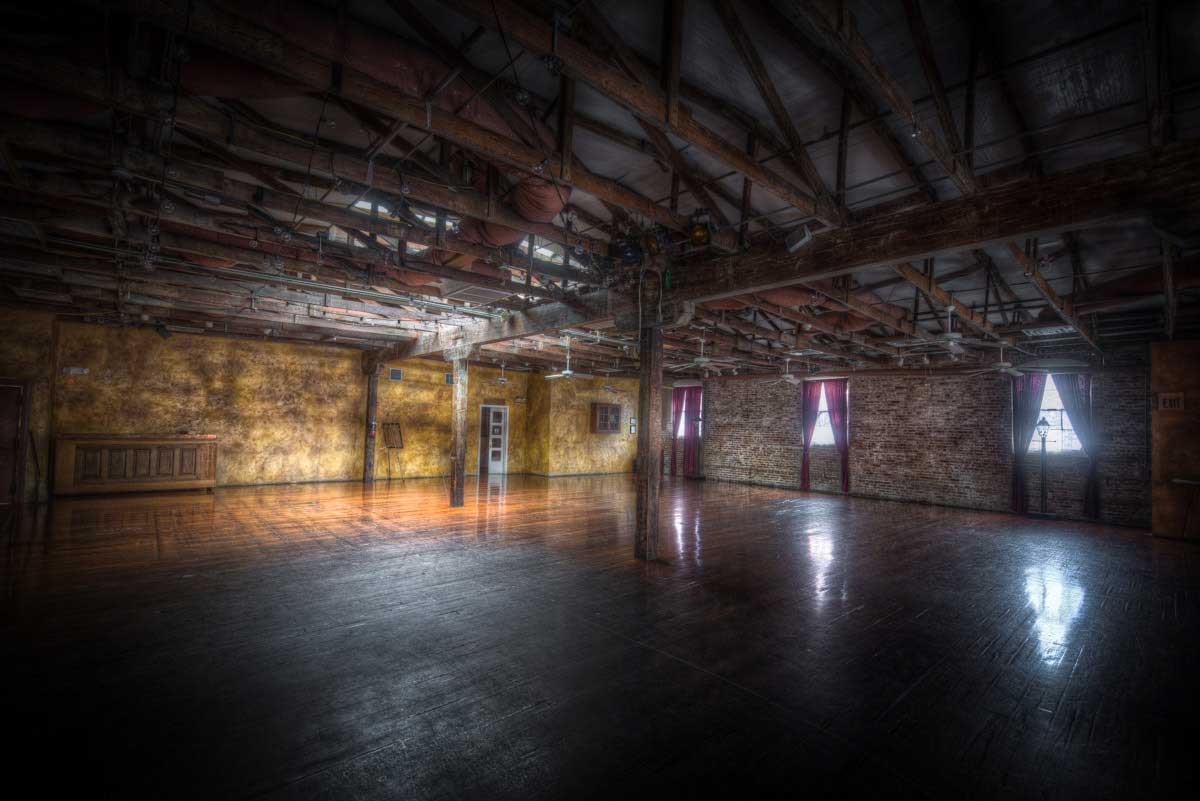
Because of its often diverse and dark background, it should come as no surprise that the Musee Wax Conti Museum is haunted. Guests have remarked upon seeing something or someone out of the corner of their eyes. Bones were discovered in the outer walls of the Haunted Dudgeon only three years ago. The coroner was called but management never heard back. (They do hope that they were animal bones, however).
What else may be lurking at this historical landmark? What other secrets or stories will remain forever untold once this legendary museum closes its doors for good?
It is with good fortune that Ghost City Tours' paranormal team had the opportunity to conduct an overnight investigation. What they found . . . Well, even the largest skeptics might feel chills race down their spine at these stories.
Upon standing in the area of the museum called the French Opera House, our paranormal team immediately heard the disembodied voice of a man welcoming them. The spirit's "hi!" was a distinct EVP, so startling in its clarity that the team immediately looked over their shoulders to check if someone had followed them in.
No one had.
Moments later, another voice was heard--he invited them to "just turn around here," and it was then that our investigators began to question whether or not the ghosts were welcoming them or whether the phenomena was strictly residual energy. Within the ghostly world, "residual energy" can best be explained by thinking of a recording, in which something is repeated again and again. The spirits themselves are locked within that time frame or event, where interactions between the living and the dead are almost impossible to secure. Were the disembodied voices in the French Opera House exhibit simply caught in playback, harkening back to days gone by when the property was a brewery in the twentieth century or even a coffeehouse during the nineteenth? Almost directly next to where the voices were caught is the French Quarter's oldest freight elevator. It is entirely possible that the spirit has been giving instructions as to where put the new deliveries for decades now . . .
Only another investigation might clear the confusion--good fortune has struck, however, and Ghost City Tours is lucky enough to have garnered another go of doing another overnight ghost hunt.
Paranormal hauntings generally stray toward activity which has been caught through electromagnetic equipment; the strains of voices are heard or the heavy footfalls of shoes echo on the recording.
Ghostly sightings aren't the norm--but the Wax Conti Museum is anything but normal.
On three different occasions during the course of the investigation, our paranormal team witnessed dark figures sweep past them.
The upstairs kitchen was the scene of the first sighting. Two of Ghost City's team watched in shock as a shadow moved toward the doorway. It waited there, so very clear to the eye, even as the investigators stood opposite the figure. Later the team would describe the sensation as immobilizing--not because the dark shadow had paralyzed them in anyway, but because seeing an entity consciously block the only exit from the kitchen had struck them with utter disbelief. Soon, the threatening presence faded, disappearing into the night, and the two-person team hightailed it out of the area.
But that one paranormal occurrence was not the last: upstairs in the great reception room, the Owner of Ghost City Tours and the General Manager found themselves waiting for any sign of paranormal life. They set up equipment in hope of connecting with the ghosts of the Wax Conti Museum.
If only they had known then what they know now.
Moments later, the ghostly voice of a young girl came through, teasing them both with the chance to see her physical spirit. "Do you want to see me?" she baited with youthful eagerness. The owner and GM did, without doubt. Off of the main room, they decided to sit on a green sofa in wait for the spirit to appear.
She did, her shadowy figure bouncing up between the sofa and an antique dresser like she played an otherworldly game of hide-and-seek.
The experience was one-of-a-kind and though her form soon vanished as though her ghost had grown tired, the paranormal investigators were thrilled at what they had caught.
Later, a young boy was spotted in the Haunted Dudgeon.
Are perhaps these ghostly children those who had worked at the Sweet-Orr Garment Factory before the fire destroyed it all? Are they perhaps the children of past owners of the property, like the Blasini family? Or perhaps the spirit boy seen in the Dudgeon was once a student who'd attended Jefferson Academy? What remains most interesting about this entire overnight ghost hunt is that the paranormal investigation was held before our historians researched the property. The ghostly shadows seen, the disembodied voices heard--the pieces have only been put in place after the event happened.
Upon our return to the Wax Conti Museum for a public ghost hunting event, we can only hope to uncover more about the spirits who haunt this museum. Until then, one question will remain: Who is haunting the Musee Conti?
It is with much regret that the Musee Conti Wax Museum will be closing its doors on January 30, 2016.
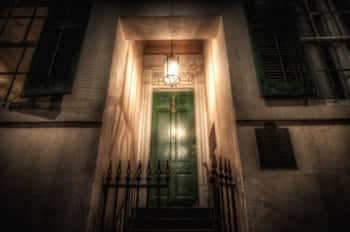
Was this the site of a grizzly mass murder?

New Orleans' most haunted Cemetery
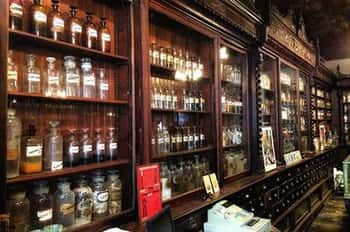
Who haunts this museum, and why?